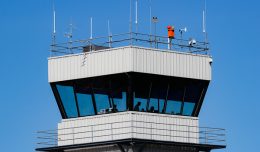It’s been about 60 years since the FAA declared how much weight any seat on a commercial airliner must be able to hold: 170 pounds.
Over the intervening period, many aspects of commercial aviation have changed drastically: the advent of jet airliners, the opening of the air travel market to the masses and the industry’s exponentially improved overall safety record, all thanks in large part to ever-evolving safety regulations.
America’s waistlines have also expanded significantly since the 1950s. The average American male now weighs 194 pounds, while the female population tips the scales at an average of 165 pounds.
A New York Times piece published earlier this week questions the FAA’s wisdom on the subject, fueled by a group of scientists who worry that the physics of this new reality is putting every air traveler in danger. Heavier passengers in current seats are a risk not only to themselves but to everyone on the plane, they say, because should one of those seats fail in an accident, the passengers and their broken chairs would become flying projectiles.
Interestingly, the FAA has recognized that passengers are getting bigger, but only when it comes to other realms of safety guidelines. In 2005, for example, they increased the passenger weights to be used by airline dispatchers when calculating a flight’s weight and balance, with men hiked to 205 pounds and women to 179 pounds. In 2006, the FAA mandated that seats be able to withstand greater impacts, measured in g-forces. Those impacts, however, are still measured using the 170 pound standard set in 1952. A modern seat built to withstand 16g’s while holding 170 pounds will not withstand 16g’s carrying a 250 pound passenger.
But maybe leaving well enough alone is the prudent move. For one thing, the National Transportation Safety Board says they’ve never found a case where a passenger’s weight affected the survivability of a crash. And, generally speaking, stronger seats mean heavier seats, and heavier seats burn more fuel. Southwest Airlines, for example, is refitting much of its Boeing 737 fleet with seats that are about six pounds lighter, enough to see a return on their $100+ million investment in just a couple of years.
Reducing fuel consumption is a national priority, so a federal mandate that planes get heavier without a solid safety motivation for doing so would likely be a nonstarter. As air safety regulations tend to be more reactive rather than proactive, the rules may never change unless an tragedy convinces the government otherwise.







